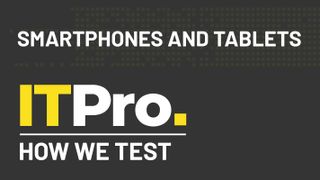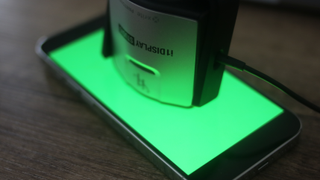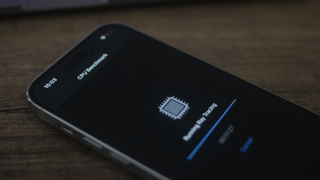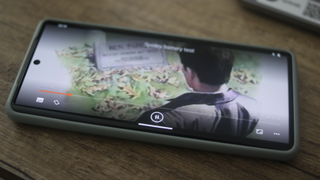
Mobile devices are essential to the fabric of modern life. Whether you’re shopping for a new personal device or a fleet of business handsets, you need to be sure that you’re making the right choice, so all of our smartphone and tablet reviews include in-depth technical testing to determine their relative quality and performance.
Tablets and smartphones are benchmarked using the same processes, but with the understanding that the two will be used in different ways, and for different use-cases, which changes the context somewhat. As well as testing various technical aspects of their capabilities, we’ll also look at their design and ergonomics, the extra quality-of-life features they offer, and the value they represent, as well as assessing the camera quality.
Display
Some of our assessments about a phone’s display will be subjective observations about how it looks to the naked eye, but we also test each screen using a colorimeter to measure the maximum brightness and colour reproduction. We primarily test against the sRGB colour gamut - which is the main colour space that digital displays are usually calibrated to reflect - but we occasionally measure against the Adobe RGB and DCI-P3 colour spaces in certain appropriate cases.

We also measure Delta E, which gives a guide as to how accurately the panel displays a colour. Anything under one is excellent and likely to be difficult for the human eye to distinguish; between one and two is still strong; anything above this suggests a panel that may not be accurate enough for professional work. However, unless you work in photo and video creation and do a significant amount of shooting or editing on your phone, this is unlikely to be an issue.
Performance
To measure the performance of phones and tablets, we run Geekbench 5, which is a good test of the processor and memory in particular and includes both a test for single-core and multicore speeds. We’ll usually note the results and how they compare to similar devices, as well as how the phone feels in practice. However, this is usually only a minor point, as most mid-range and flagship phones have been more powerful than most average users need for several years, and only the most extreme power users will notice much in the way of slowdown or lag.

Battery life
To measure a device’s battery life, we fully charge the battery, set the screen to a specific brightness level of 170cd/m2 (in order to ensure consistently comparable results across devices) and put it into flight mode. We then play a looped video, and measure how long it takes for the phone to reach critical battery level and go into hibernation mode.

This gives us a benchmark that we can use to compare relative performance between different devices, but which may not be representative of real-world use. To that end, we also assess how long the battery lasts when used as an everyday device, subjecting it to a variety of tasks throughout the day.
Get the ITPro. daily newsletter
Receive our latest news, industry updates, featured resources and more. Sign up today to receive our FREE report on AI cyber crime & security - newly updated for 2024.
ITPro is a global business technology website providing the latest news, analysis, and business insight for IT decision-makers. Whether it's cyber security, cloud computing, IT infrastructure, or business strategy, we aim to equip leaders with the data they need to make informed IT investments.
For regular updates delivered to your inbox and social feeds, be sure to sign up to our daily newsletter and follow on us LinkedIn and Twitter.





